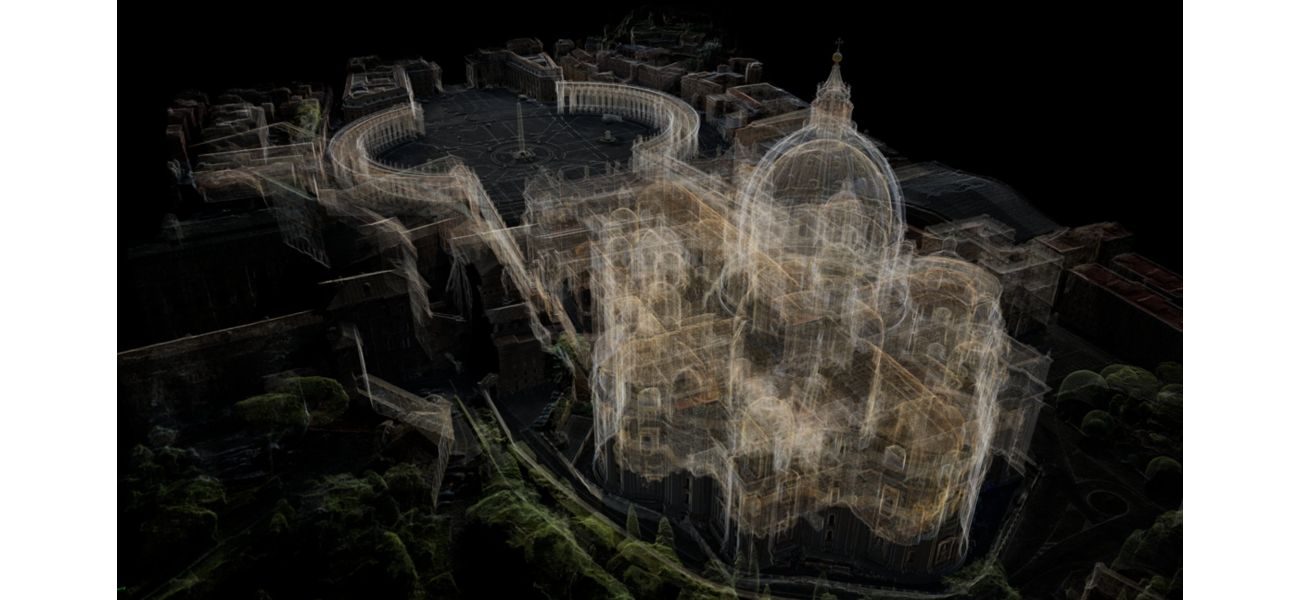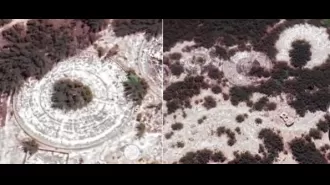New data reveals that Vatican City has sustained more harm than originally believed, as indicated by AI.
The outcomes are shocking.
November 12th 2024.

Thanks to the wonders of AI, a digital twin of the iconic St. Peter's Basilica has been brought to life. This incredible feat was made possible by using advanced technology to uncover structural vulnerabilities that are not visible to the naked eye. By creating an ultra-precise 3D computer model, the team was able to simulate the physical world and create a digital replica of the famous Catholic church.
This groundbreaking project was a joint effort between Microsoft and the Vatican, in collaboration with French startup Iconem, which specializes in digital preservation. Aptly named "La Basilica di San Pietro," the project utilized drones, cameras, and lasers to capture over 400,000 detailed images of both the exterior and interior of the basilica in just three weeks. The AI analysis of these images was able to detect hidden cracks and fissures, providing valuable insights for future restoration work. In addition, it uncovered lost mosaic tiles and revealed intricate details of the ornate ceiling.
Microsoft's Vice Chair and President, Brad Smith, expressed his admiration for the project, calling it "one of the most technologically advanced and sophisticated projects of its kind." Even Pope Francis himself acknowledged the significance of this endeavor, stating that "everyone should feel welcome in this great house." During a meeting with Mr. Smith and the project's development teams, the Pope emphasized the importance of caring for the basilica, both spiritually and materially, even with the help of modern technology.
The digital twin of St. Peter's Basilica also opens up new possibilities for those who may never have the opportunity to visit the Vatican in person. Through this virtual experience, people can explore the famous church with the same level of detail as if they were there in person. This technology has already been utilized in the reconstruction efforts of other historic buildings, such as the Notre Dame Cathedral in Paris after the devastating fire in 2019.
In conclusion, the creation of the digital twin of St. Peter's Basilica is a remarkable achievement that combines advanced technology with the preservation of cultural heritage. It allows for a deeper understanding and appreciation of this magnificent structure, while also paving the way for future advancements in digital preservation. As Pope Francis said, "it is a gift and a task to care for it, in both a spiritual and material sense, even through the latest technologies."
This groundbreaking project was a joint effort between Microsoft and the Vatican, in collaboration with French startup Iconem, which specializes in digital preservation. Aptly named "La Basilica di San Pietro," the project utilized drones, cameras, and lasers to capture over 400,000 detailed images of both the exterior and interior of the basilica in just three weeks. The AI analysis of these images was able to detect hidden cracks and fissures, providing valuable insights for future restoration work. In addition, it uncovered lost mosaic tiles and revealed intricate details of the ornate ceiling.
Microsoft's Vice Chair and President, Brad Smith, expressed his admiration for the project, calling it "one of the most technologically advanced and sophisticated projects of its kind." Even Pope Francis himself acknowledged the significance of this endeavor, stating that "everyone should feel welcome in this great house." During a meeting with Mr. Smith and the project's development teams, the Pope emphasized the importance of caring for the basilica, both spiritually and materially, even with the help of modern technology.
The digital twin of St. Peter's Basilica also opens up new possibilities for those who may never have the opportunity to visit the Vatican in person. Through this virtual experience, people can explore the famous church with the same level of detail as if they were there in person. This technology has already been utilized in the reconstruction efforts of other historic buildings, such as the Notre Dame Cathedral in Paris after the devastating fire in 2019.
In conclusion, the creation of the digital twin of St. Peter's Basilica is a remarkable achievement that combines advanced technology with the preservation of cultural heritage. It allows for a deeper understanding and appreciation of this magnificent structure, while also paving the way for future advancements in digital preservation. As Pope Francis said, "it is a gift and a task to care for it, in both a spiritual and material sense, even through the latest technologies."
[This article has been trending online recently and has been generated with AI. Your feed is customized.]
[Generative AI is experimental.]
0
0
Submit Comment





